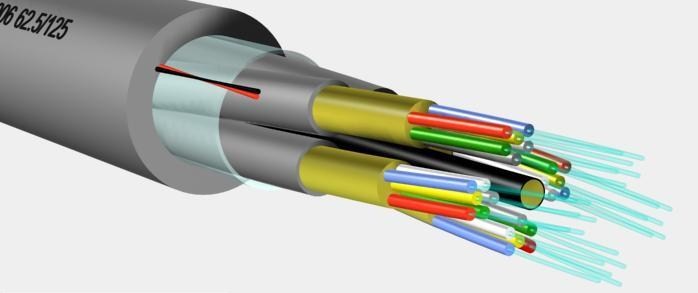Fibre optic cables last a lifetime but still require regular cleaning. This cleaning regime is not as simple as you think. It is more than dusting and rubbing the outer jacket. Cleaning and maintenance of fibre optic cables is also about keeping the cables away from direct sunlight, moisture and rodent attacks. Since they are made of glasses, they are relatively delicate. The outer jacket keeps the external agents from damaging the optic cables but you need extra preparation to handle the life more efficiently. Here’s a list of 5 things you must do to keep the optic fibre cables retain their “desired” operational efficiency.
1 Verify the Performance rating of cable before and after Cleaning
Always test the rating of the fibre cable before cleaning. Verify whether the cable is functioning at the level at which it is supposed to work. Moisture and blockage in the internal reflection can create barriers in transmission. Signal loss can be prevented if you calibrate the cable volume before and after every maintenance routine.
Always test the rating of the fibre cable before cleaning. Verify whether the cable is functioning at the level at which it is supposed to work. Moisture and blockage in the internal reflection can create barriers in transmission. Signal loss can be prevented if you calibrate the cable volume before and after every maintenance routine.
2 Check for Loops and knots
Due to poor handling of the fibre optic cables, they tend to get tangled. The tangling usually occurs at places where there is movement. Check for the knot over ceilings and in false wall facade. Though the knots may not have any impact on the performance of the cables, they definitely tend to shorten the overall cable layout. When you would think of expanding your cable layout, the tangled optic fibre cable would pose lot of unnecessary issues. You may either cut the tangled part or use fusion splicing to rejoin them.
Due to poor handling of the fibre optic cables, they tend to get tangled. The tangling usually occurs at places where there is movement. Check for the knot over ceilings and in false wall facade. Though the knots may not have any impact on the performance of the cables, they definitely tend to shorten the overall cable layout. When you would think of expanding your cable layout, the tangled optic fibre cable would pose lot of unnecessary issues. You may either cut the tangled part or use fusion splicing to rejoin them.
3 Never place a heavy furniture over the cables
Fibre optic cables are not built for rugged handling. Though the manufacturers would promise a rough handling won’t create problem, refrain from making such an attempt. Handle the fibre optic cable just like a high-end electronic gadget. Never place your feet or tap it with your heels. Keep the fibres away from heavy furniture, especially the ones made of metal and wood.
Fibre optic cables are not built for rugged handling. Though the manufacturers would promise a rough handling won’t create problem, refrain from making such an attempt. Handle the fibre optic cable just like a high-end electronic gadget. Never place your feet or tap it with your heels. Keep the fibres away from heavy furniture, especially the ones made of metal and wood.
4 Use dryer to clean the core
Use a blow dryer at least rpm speed to clear the dust and moistures. Use dry air to ensure highest degree of cleaning. Use gloves to avoid leaving fingerprint marks on the body. Never use the blow dry to clean the inside of the fibre optic cable. If you have recently performed fusion splicing you won’t require the dry blowing option. The automatic fusion splicing machine has special apparatus to clear the moistures and dust. If you are using connectors, be extra careful about using dryers at high rpm. You might disturb the alignment altogether.
Use a blow dryer at least rpm speed to clear the dust and moistures. Use dry air to ensure highest degree of cleaning. Use gloves to avoid leaving fingerprint marks on the body. Never use the blow dry to clean the inside of the fibre optic cable. If you have recently performed fusion splicing you won’t require the dry blowing option. The automatic fusion splicing machine has special apparatus to clear the moistures and dust. If you are using connectors, be extra careful about using dryers at high rpm. You might disturb the alignment altogether.

5 Avoid disturbing the light source panel
Light source adjustment can be done only by expert fibre optic engineers or manufacturers. A disturbed source will lead to poor attenuation and kill the signals beyond a certain frequency. Always rely on the services of a certified technician. A technical cleaning service will cost anywhere between USD 200 to USD 4500 depending on the expanse of the layout and components involved.
Light source adjustment can be done only by expert fibre optic engineers or manufacturers. A disturbed source will lead to poor attenuation and kill the signals beyond a certain frequency. Always rely on the services of a certified technician. A technical cleaning service will cost anywhere between USD 200 to USD 4500 depending on the expanse of the layout and components involved.

















